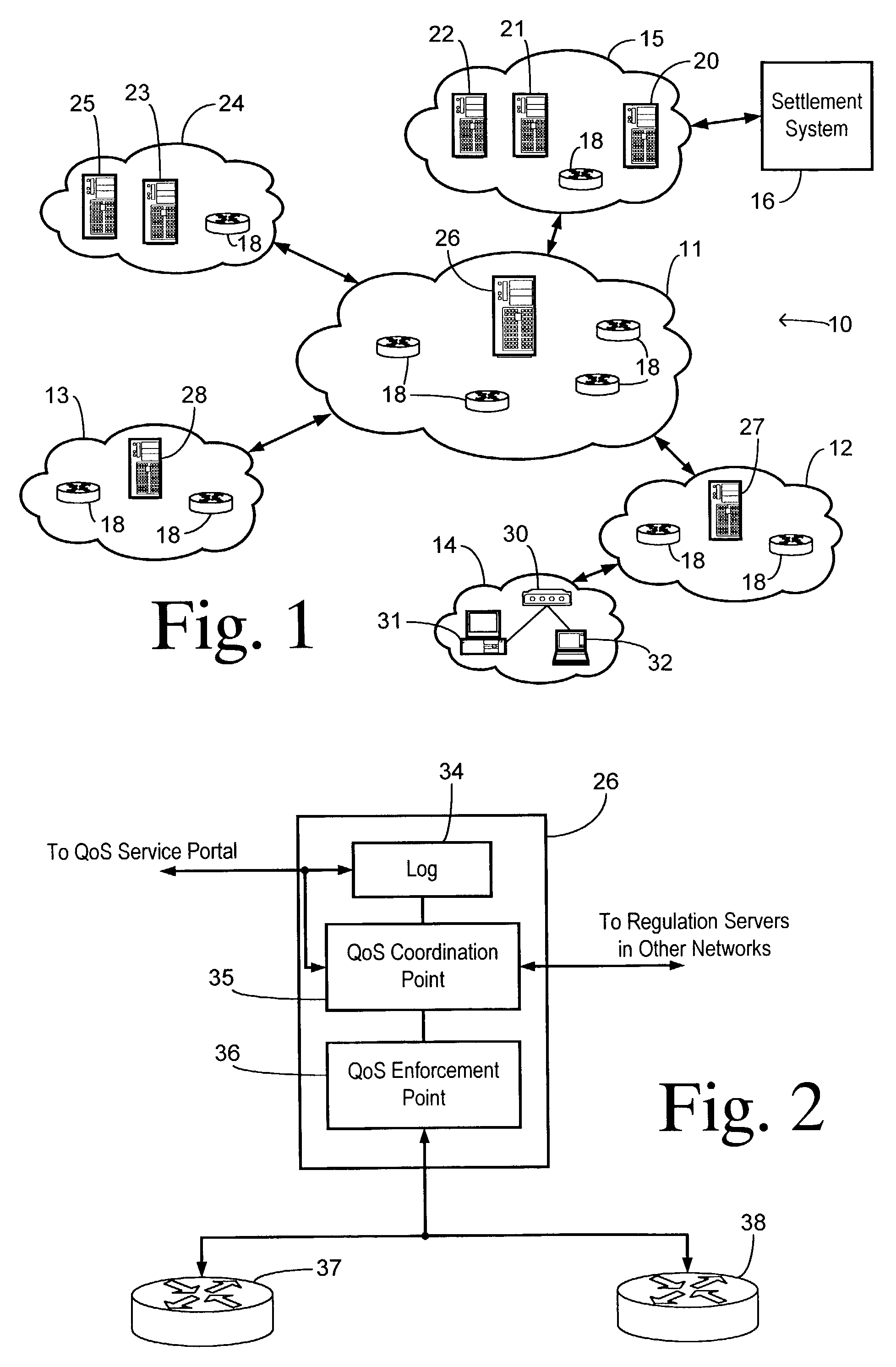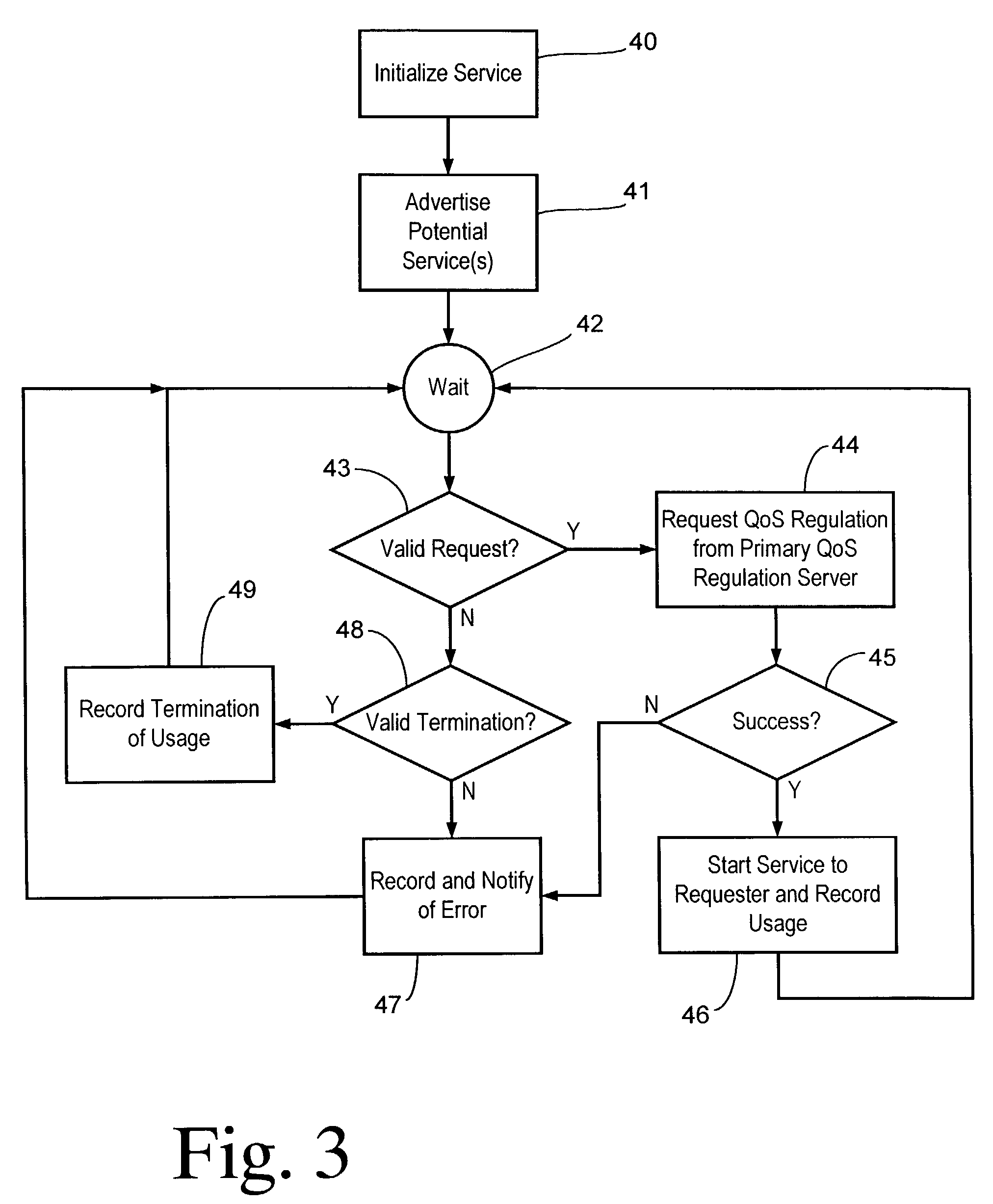Internetwork quality of service provisioning with reciprocal compensation
a technology of reciprocal compensation and network communication link, which is applied in the field of reciprocal compensation for network quality of service provisioning, can solve the problems of long latency times, network providers incur increased costs for adding hardware resources and/or underutilization of existing hardware resources, and network communication links operating at a predetermined qos between endpoints in unrelated (i.e., not commonly controlled) networks. achieve the effect of financial compensation
- Summary
- Abstract
- Description
- Claims
- Application Information
AI Technical Summary
Benefits of technology
Problems solved by technology
Method used
Image
Examples
Embodiment Construction
[0017]The present invention is comprised of a process for providing financial reciprocal compensation for a QoS managed service path including various providers in an internetwork. In one typical embodiment, the process starts when a service (i.e., resource), or group of services, is advertised to potential users in the internetwork (e.g., via a portal). When a user requests access to one or more of the services or resources advertised, a QoS-regulated path generation request is forwarded to the advertisement / acceptance portal which validates the request to identify a party responsible for paying for the use of the QoS-regulated path. The portal provides a grouping, sorting, aggregating, and / or translating function for a logical group of users, and a web browser may be used to display a menu corresponding to the portal. A Java-based order form, cgi script, or other existing web mechanisms can be employed in portal software running on one or more servers. By way of example, the adver...
PUM
 Login to View More
Login to View More Abstract
Description
Claims
Application Information
 Login to View More
Login to View More - R&D
- Intellectual Property
- Life Sciences
- Materials
- Tech Scout
- Unparalleled Data Quality
- Higher Quality Content
- 60% Fewer Hallucinations
Browse by: Latest US Patents, China's latest patents, Technical Efficacy Thesaurus, Application Domain, Technology Topic, Popular Technical Reports.
© 2025 PatSnap. All rights reserved.Legal|Privacy policy|Modern Slavery Act Transparency Statement|Sitemap|About US| Contact US: help@patsnap.com



